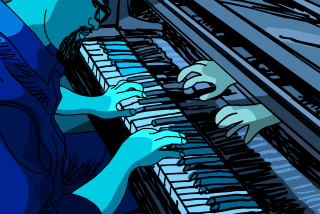Brazil protests: Cultural tension was clear in ‘City of God,’ more
A novelist writes of a Brazilian mega-city where the rich soar in helicopters above the traffic and the squalor. A movie depicts rogue Rio de Janeiro cops who kill and extort money from terrified slum-dwellers. A hip-hopper in the peripheral neighborhoods of Sao Paulo raps about daily life in the periferia set to the funky rhythms of samba and U.S. soul.
Although the popular outrage that has spilled across Brazil this month has taken some by surprise, the cultural warning signals have been visible for a while.
For at least a decade, a small but telling cross section of movies, books, musical acts and other forms of artistic expression have suggested that the major stress lines in Brazilian society — economic inequality, pervasive corruption, sub-par public services, lack of accountability among the country’s elites — were pointing toward a crackup.
In retrospect, those artworks now look like road maps to a nation’s psyche, alternately jittery and defiant.
PHOTOS: Brazilians protest rising public transport costs
The alarms have gone off in a few literary works, such as James Scudamore’s “Heliopolis” (2009), a bloodier, 21st century version of “Great Expectations” set amid the penthouses and shantytowns of Sao Paulo.
Its protagonist, Ludo, is born in poverty and raised by a single mother before being adopted by a supermarket magnate. He’s also having an adulterous affair with his spoiled but luscious adoptive sister, a kind of Estella to his Pip. When Ludo must help establish a chain of supermarkets in the barrio, he’s torn between class-tribal loyalties, and the book’s denouement teeters between borderline comic and violent.
Evidence of Brazil’s growing restlessness also blossomed in the sly social commentaries of the identical twin brothers Otavio and Gustavo Pandolfo, known as Os Gemeos (“The Twins”), who for years have been “bombing” graffiti and gigantic cartoon-folkloric imagery across public spaces.
Signs of social unrest could be discerned, too, in the prescient samba/hip-hop musings of musicians such as Rappin’ Hood (from the sprawling Heliopolis shantytown), and in feature films like Fernando Meirelles’ and Katia Lund’s “City of God” (2002) and Jose Padilha’s cinematic “trilogy” about the entrenched class bias of the country’s criminal justice system (“Bus 174,” “Elite Squad” and “Elite Squad 2: The Enemy Within”).
STORY: Brazil’s leader again reaches out to protesters
“City of God,” with its hand-held, documentary verismo style, gave many non-Brazilians an unflinching look at some of the realities of Rio’s teeming favelas, of which the mega-city now has about 1,600. Although many of these shantytowns, some with populations of 200,000 or more, are dominated by drug cartels, they also have been brutalized by Brazil’s special police forces, like the vigilante units depicted in “Elite Squad.”
“Elite Squad” (2007) and “Elite Squad 2,” released three years later, illustrated how both Rio’s drug gangs and its cops are pawns in a bigger power game played by developers and politicians. Blending harrowing action with scathing social critique, the movies are among the top-grossing releases in Brazilian history, confirming their director’s credentials as the country’s No. 1 bipartisan scourge.
“I never think in terms of ‘left’ and ‘right,’” Padilha, who is directing the “Robocop” reboot, told me in a 2011 interview. “The state generates violent individuals on one hand by mistreating small-time criminals and street kids and on the other hand by mistreating people who want to be cops.”
Caio Junqueira, who plays a rogue officer in “Elite Squad,” told me that socially astute, confrontational movies such as Padilha’s and “City of God” coincided with a growing desire by Brazilian audiences to engage with more than escapist fantasy.
PHOTOS: Arts and culture in pictures by The Times
“The people got used to this fake universe that the telenovelas created,” Junqueira said, referring to Brazil’s ubiquitous soap operas. “Serious films reflect the reality of the population. Because of that, the people are no longer putting up with the invented reality that the telenovelas have always tried to push.”
As the country’s political classes trumpeted Brazil’s economic growth and dwindling rates of extreme poverty, some artists turned a skeptical ear to the triumphalist pronouncements.
Last year, director Kleber Mendonca Filho weighed into the discussion with “Neighboring Sounds,” a film about the uneasy rumblings of class conflict beneath Brazil’s recent financial boom. The action takes place in an upwardly mobile Recife enclave, where the interests of a group of newly middle-class Brazilians who are enjoying the benefits of easy credit, consumer goods and improved schools clash with those of a patriarchal landowner.
The title hints at the developed-world anxiety that results from trying to keep up with the Joneses (or the Santoses).
As the recent protests demonstrate, the rising expectations of the middle class coincide with the deep-seated anger of the favelas, whose residents were treated as invisible, their communities seldom recognized on maps or street signage.
Some commentators have expressed surprise that the protests have even targeted the country’s most sacrosanct cultural institution, futbol. Many Brazilians are furious that the country is spending billions building new soccer stadiums and sports facilities (many already far overbudget) in preparation for hosting the 2014 soccer World Cup and the 2016 Olympic Games in Rio.
Brazilians have seen this movie before, when their nation hosted the 1950 World Cup. At that time, the nation was far poorer than it is today, yet it spent a small fortune hosting the tournament, including the construction of Rio’s 200,000-seat Maracana stadium, which was barely finished when the final match between Uruguay and Brazil took place there.
During the buildup to the 1950 World Cup, as now, Brazilians were constantly being told that theirs was “the country of the future.”
It was a time “when we believed that Brazil was the spring of a new civilization for the whole world, absolutely,” the film director Carlos Diegues (“Five Times Favela”) told me in his offices in Rio several years ago. “I was absolutely convinced that next morning we [would] wake up in a great country, in a very important country, with social justice.”
Instead, starting in 1964 and lasting for 21 years, Brazilians woke up in a military dictatorship that sent many people, including many artists, into prison and-or exile, including pop provocateurs such as Caetano Veloso and Gilberto Gil.
But eventually most of those artists came back, bringing with them not only their experiences of more open societies, but also newfangled artistic ideas and influences. Then they began converting those into cultural forms that were distinctly Brazilian, a process of transformation that the poet-
polemicist Oswald de Andrade celebrated in his influential “Manifesto Antropofago” (Cannibal Manifesto), published in 1928.
That spirit of reinvention and self-reliant confidence, of DIY assertiveness, bubbles through much of today’s Brazilian culture, particularly in renegade art forms. As Derek Pardue writes in “Brazilian Hip Hoppers Speak From the Margins” (2008, 2011), the sentiment is expressed in a phrase that has become a kind of mantra for Brazilian hip-hop artists: “nois na fita” — “we’s on tape.”
It’s the Portuguese-language equivalent of the Spanish phrase “si se puede” (yes we can) — a declaration that has found echoes this month in the chants piercing the streets of Brazil.
More to Read
The biggest entertainment stories
Get our big stories about Hollywood, film, television, music, arts, culture and more right in your inbox as soon as they publish.
You may occasionally receive promotional content from the Los Angeles Times.



























































































































